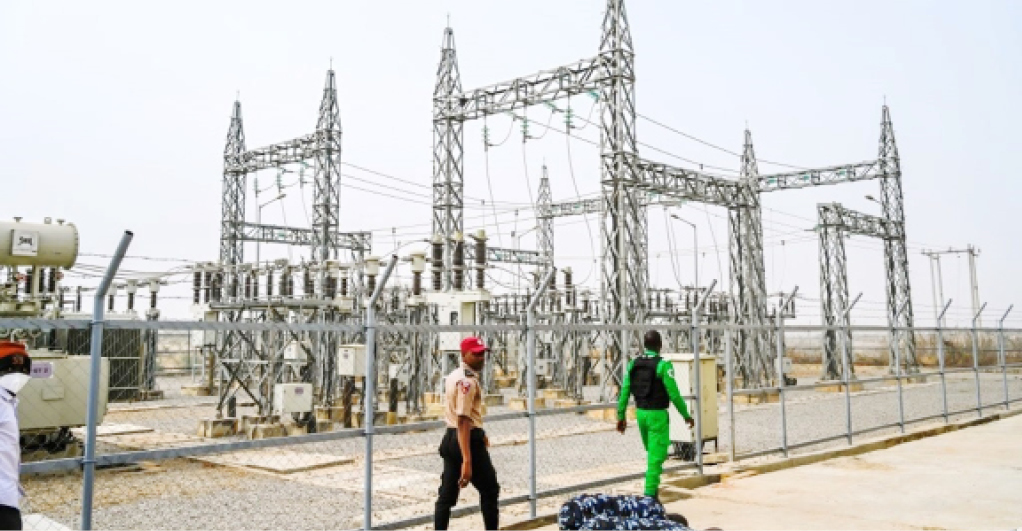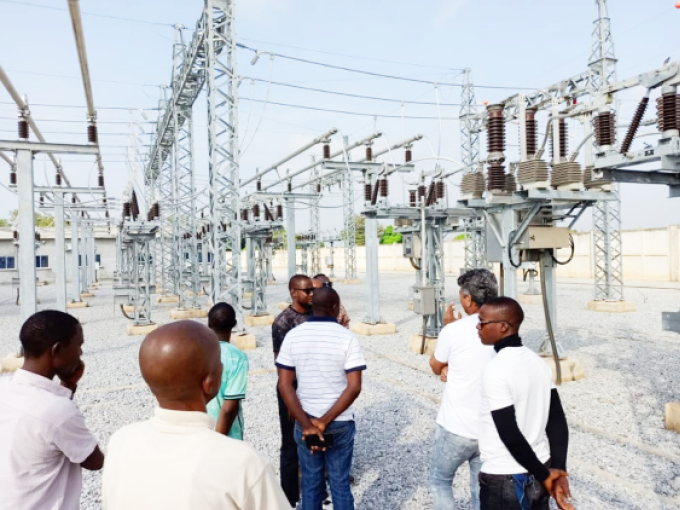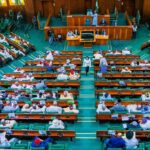Power plants across northern parts of the country are largely dormant despite huge investments running into trillions of naira, Daily Trust on Sunday investigations have shown.
From Abdullateef Aliyu (Lagos), Hamisu Kabiru Matazu, Olatunji Omirin (Maiduguri), Tijjani Ibrahim (Katsina), Ibrahim Musa Giginyu (Kano), Magaji Isa Hunkuyi (Jalingo) &Abubakar Akote (Minna)
The Federal Government in its quest to address the perennial power challenge in the country has over the years invested billions worth of naira in building power plants across the country to boost power generations.
However, despite the huge investments made on these power plants, many of them are yet to generate any significant megawatt to the National Grid, thus worsening the country’s power problem.
As of July 2023, the country power generation was put at about 3,970.33 megawatts, according to data collated from the National Energy System Operator; a semi autonomous unit of the Transmission Company of Nigeria (TCN). This is a far cry from what the country requires to meet its power needs.
According to the Association of Nigerian Electricity Distributors (ANED), Nigeria needs to generate about 33,000 Megawatts to have stable electricity.
UN Chief ‘outraged’ over Israeli attack on hospital convoy
On Nigeria’s ‘winner takes all’ electoral system
ANED’s Executive Director, Research and Advocacy, Mr Sunday Oduntan, who spoke in Yola at a stakeholders’ workshop organised in collaboration with the MacArthur Foundation, said more needed to be done to boost power generation in the country.
Findings by Daily Trust on Sunday show that a number of these power plant projects have remained largely dormant while those which are said to have been completed are not functioning optimally or operating below expectation due to one issue or the other.
Niger
The Zungeru hydroelectric power project is the fourth hydroelectric dam in Niger State. The state already houses Shiroro, Kainji and Jebba dams that have provided electricity for the country.
The Zungeru hydroelectric power dam is said to be the biggest Nigeria’s hydroelectric power dam with generating capacity of 700 megawatts of electricity.
According to NS Energy, the plan to build the Zungeru hydroelectric power plant was conceived in 1982 but the project was not executed due to the lack of funds.
The project, which started in 2013, was being handled by the China National Electrical Equipment Corporation (CNEEC) and Sinohydro Consortium. The project was reportedly expected to be ready for commissioning in the first quarter of 2023 but wasn’t commissioned until Buhari left power.
NS Energy said the project gulped about $1.3bn investment with preferential loan facility from the Export-Import Bank (Exim Bank) of China. While the Nigerian government provided 25 per cent funding for the project, the Exim Bank provided 75 per cent with low-interest loans.

Experts said the Zungeru hydroelectric power dam would produce about 2.64 billion kwh of electricity annually and would meet about 10 per cent of Nigeria’s total domestic energy needs.
The dam, if put to use, is also expected to generate huge direct and indirect job opportunities for over 2,000 citizens.
A former governor of Niger State, Abubakar Sani Bello, said during a tour of the facility in May this year that the dam would, in addition to huge electricity generation, help in controlling floods, support irrigation and other farming activities.
Residents told Daily Trust on Sunday that the project, which was supposed to be commissioned in the first quarter of 2023, was yet to see the light of the day, putting the citizens on suspense.
On May 12, 2023, the project was said to have attained 98 per cent completion.
After a public hearing by the Senate Committee on Power of the 9th Assembly sometime this year, the former minister of power was invited to provide explanations on the status of the project.
Daily Trust on Sunday recalls that this prompted a visit by the chairman, Senate Committee on Power, Gabriel Suswan, on a fact-finding mission to ensure that Nigerians enjoyed the full benefits of the concession of the project.
In November 2022, the Federal Government of Nigeria under Muhammadu Buhari called for bids for concession of the project to be managed for 30 years by the bidder.
Speaking to journalists after touring the facility, Suswam explained that members of the National Assembly had doubts about the concessioning of the project and did not want Nigerians to be shortchanged, adding that they started investigating the processes surrounding the concessioning of the project.
But he said they were satisfied with what they saw and would inform the Senate about their findings.
Senator Suswam also added that the project was ready to be commissioned as all components of the dam had been fixed.
A former Minister of Power, Abubakar Aliyu, who commended the Muhammadu Buhari-led administration during the visit for sustaining and completing the project, said the type of the Zungeru hydroelectric power dam was last constructed in 1960.
“Kudos to the government of Muhammadu Buhari for sustaining the construction and completion of this project;700megawatts of electricity to the national grid is a huge success. The last time a big dam like this was constructed was in 1960,” he said.
He said the work had been completed and all necessary measures were being put in place at the National Council of Privatisation to tidy up the concession deal, with Mainstream Energy being the preferred bidder.
Daily Trust on Sunday gathered that the Zungeru power dam has a height of 95m and is located on River Kaduna. It was also said to be the first dam to be constructed using the Roller Compacted Concrete (RCC) technology.
Also, four of the turbines had been reportedly completed, each with 175 MGW. The dam also has four water spillways.
Daily Trust on Sunday also gathered that the 330KV Switchyard at Mararaba has been completed while the 132kv Tegina substation was ongoing as at May this year.
While citizens had high hopes that the hydroelectric power dam in Zungeru would ensure access to more electricity, the delay in putting the dam into use has almost dashed their hope.
A resident of Zungeru, the host community of the dam, Abdulaziz Yusuf, in an interview with Daily Trust on Sunday said, “We believe we would have more access to electricity if the project is put into use and it will provide the immediate communities opportunities to benefit from job opportunities and more.”
Residents of Zungeru confirmed to Daily Trust on Sunday that the project had been completed but had not been put into use, raising concern among the people.
Recently, some cables from the power station were vandalized. One of the Armored cables, according to police prosecutors worth N9.4 million was found in the possession of the first convict, Yusuf Anas while the other was sold at the cost N145, 000 by the convicts.
A Chief Magistrate Court in Minna sentenced Yusuf Anas (28), Olaore Joshua (23), Haliru Garba (40) and Musa Magaji to prison for vandalising cables at the Power Station.
Taraba
The Kashimbila hydro power plant in Taraba State was commissioned early this year by former President Muhammadu Buhari.
The power plant, which was built on the Katsina-Ala River in Takum Local government Area of Taraba State, has 40 Megawatts capacity.
Electricity generated from the station is injected into the national grid through Yendev in Benue State and further fed to the transmitting line to supply power to the Federal Capital Territory (FCT), Plateau, Bauchi and Gombe states, a source told Daily Trust on Sunday.
Similarly, the plant is also supplying uninterrupted power to five local areas in southern Taraba, namely, Takum, Donga, Ussa, Wukari and Ibbi local government areas.
However, the other local government areas in northern and central senatorial zones are not benefitting from power generated in the station.
In all, the entire Taraba central senatorial zone is not linked to the national grid and not also connected to the Kashinbila hydro power plant, which is close to the zone.
Governor Agbu Kefas recently visited the power plant and promised to partner to exploit power being generated for the industrial development of the state.
Maiduguri gas plant still not utilised
The Maiduguri emergency gas power plant constructed by the Nigerian National Petroleum Company (NNPC) Limited to supply 50 megawatts of electricity to the Borno State capital and its environs is yet to fully take off, Daily Trust on Sunday reports.
Inaugurating the plant in March, 2023, former President Muhammadu Buhari said the plant was constructed to achieve a stable, uninterrupted power supply that would improve the economy and lives of people in the state.
Over the past few years, insurgents had attacked power supply lines along Maiduguri-Damaturu and Maiduguri-Damboa-Biu roads, leading to acute power supply shortages to the city of Maiduguri and its environs and crippling the economic activities in the region.
However, investigation by our correspondent revealed that the plant was test-run when the former president inaugurated the project. Since then, it was only used for two weeks during the Ramadan period and shut down till date.
Asked if the plant has the capacity to fully supply electricity to Maiduguri, he said: “Our peak load in Maiduguri is 90 megawatts, so we still have 40megawatts deficit, even if the gas power plant will fully operate.”
He said the power plant was under the Transmission Company of Nigeria (TCN), so it must be channeled to the national grid before the Yola Electricity Distribution Company (YEDC) will have access to the light for onward distribution.
On whether the delay in the supply was due to gas shortage he said: “We have a reserve that will sustain the plant for years without ceasing. And the oil drilling in Maiduguri is a good omen for us because we will have gas in abundance at our doorstep.”
However, residents in the town complained that there has not been any improvement in electricity supply since the inauguration of the gas power plant.
Abubakar Meri, a resident of Legacy Estate said, “Before the inauguration we used to have 20 good hours of power supply, but now, we hardly enjoy 12 hours in one week. It is quite frustrating. Most of the people in the estate have installed solar panels because of YEDC’s disappointment.”
Another resident, Maman Fahat, said the epileptic power supply in the estate was too much.
“We spent six days on the row without light. Everything I stored in the fridge spoiled. So, left to me, this gas power plant makes no difference. In fact, we got more light before the project was commissioned,” he said.
Since the NNPC announced a plan for the gas-powered plant in April 2021 as a long-term solution to Boko Haram insurgents’ constant attacks and destruction of power lines in Maiduguri and its environs, the city and its environs have been buzzing.
A source denied that the commissioning of gas plants was done to score cheap politics, adding that they are working on the gas plants to ensure stable light in the state.
The source said: “We are working hard to ensure that every part of the state is connected to the gas plants, the little challenges people are experiencing now are as a result of the ongoing repairs.”
A Maiduguri-based public affairs analyst, Abubakar Mohammed Kareto, called for accountability and public scrutiny of the entire project, saying it was not ready for commissioning when it was done.
He said darkness and constant power failure erupted in the city recently, indicating the non-functionality of the power plant even following its presidential commissioning and majority of the people assumed that everything was fine after witnessing such a grand ceremony.
“Since its announcement, the project has been quite visible, with numerous installations and other technical activities, but it was not completed and was rushed for commissioning for political reasons.
“Something is not right, which we need an explanation for because everyone outside Maiduguri must have believed we enjoyed constant electricity supply, which is not so, he said.
“There is a need for accountability and public scrutiny of the entire project. And the call for project feasibility was appropriate and valid.
“If completed, the plant would have supplied 50 megawatts of electricity to Maiduguri and its environs, which would have been enough to power the state 24 hours a day and seven days a week. The NNPC, which is behind the project, must explain why the plant is still not producing electricity despite its official unveiling,” he said.
Katsina windmill remains uncompleted, 18 years after
The Katsina windmill farm project was started in 2005 by the late Umaru Musa Yar’adua administration when he was the governor of the state. Two years later, in 2007, the project was taken over by the federal government.
However, 18 years later, the project is yet to be completed and put to use despite several promises by the federal government to complete and commission it. Timelines for commissioning had been fixed nine times without any of the dates seeing the light of the day.
Some members of the host community are of the opinion that the project has been used as a pipe through which money was siphoned; hence it remained static for years.
A resident, Muhammadu Sabi’u said, “The workers are always coming in, but no progress has been made for years. I doubt if they don’t get anything they will be wasting their resources to come.
“We always hear hollow promises from top government officials that it will soon be completed and put to use, but nothing is done. So, I believe they are benefitting from keeping it incomplete.”
When former President Muhammadu Buhari visited the Emir of Katsina, Dr Abdulmumini Kabir Usman in his palace in July last year, the Katsina windmill project was one of the four federal projects the emir reminded the president of and urged him to complete them. The other three include a cancer research centre, Kano-Katsina road project and the Kano-Katsina-Jibia-Maradi railway project for the benefit of the state and the country.
While the other projects might have seen the blessing of the federal government, the windmill still remains comatose.
Our correspondent who visited the site at Lambar Rimi was denied access to the facility by the engineers and technicians manning the place, insisting on having a written permission from Abuja.
Some months prior to the presidential visit, the federal government had assured the government and people of the state that it would ensure the speedy completion of the windmill and power substation projects for the generation of 10megawatts of electricity.
A former Minister of Power, Abubakar Aliyu, an engineer, who made the pledge while inspecting the projects, said his visit followed requests on the project by the Katsina State Government and the Katsina Elders Forum during their visits to his office in Abuja late December 2021.
The former minister promised to meet with the contractors and consultants supervising the projects to address the concerns raised, including the provision of outstanding infrastructures, such as scudders, fire extinguishers and power generators.
Aliyu, who was with a team of engineers from the ministry, said the engineers were there to scout for natural wind fuel for the infrastructure to confirm their sufficiency to meet electricity supply requirements.
Daily Trust on Sunday reports that the windmill farm is still where it was as there is nothing being done to move the project to completion.
Similarly, in March 2020, the federal government said it was set to commission the 10megawatts of wind farm.
The then Minister of Power, Sale Mamman, an engineer, who announced the development via a tweet, noted that the project was set for commissioning later in the month.
He listed the components of the project to include engineering, procurement, construction and installation of 37 Nos GEVMP (275KW) wind turbine generators, step-up transformers for each turbine 315KVA/33KV/400V, SCADA system (for data collection, performance monitoring, control and supervision).
Others, he said, were the installation of 2× 7.5MWA transformer and accessories, as well as two years of operation and maintenance of spare parts.
Its commissioning was scheduled for 2012 but it never happened. It also got millions of naira in annual budgetary allocations from the government.
When contacted, a Katsina State Government official who craved anonymity said the delay might not be unconnected with the fact that some aspects of the project were yet to be completed, adding that from what he knew, a substation was yet to be completed.
“It is essentially a federal government project now, so I am not in a position to say what exactly is delaying the commissioning. But I know that there is a substation through which the power will be transmitted to the end users after it is evacuated from the mill. That substation has not been completed yet,” he said.
He added that there were also some of the turbines that were vandalised, saying the federal government was probably trying to complete the project in its entirety before the commissioning.
Daily Trust on Sunday reports that the project, which if completed would generate 10MW of wind energy, has defied several completion dates and has so far gulped over N4.4billion in the last 18 years since its conception.
The project comprises the erection of 37 units of 275 kilowatt (kw) wind turbine generators mounted at a height of 55 meter on an inclinable tower to generate power from wind.
Kano Solar Plant
In Kano State, the power plant being constructed by the federal government is a 10MW solar plant constructed by the Nigeria Sovereign Investment Authority (NSIA). The firm is said to have completed the development and construction of a 10MW solar farm located at Kumbotso Local Government Area of the state on behalf of the Federal Government of Nigeria, the Kano State Government, and Kumbotso Local Government Area respectively.
It was gathered that the NSIA was appointed by former President Buhari in a letter dated December 12, 2018 to assume the role of funds and project manager for the development and construction of a 10MW FGN/Kano solar project power plant.
It was also gathered that the project entails the installation and operation of a 10 MW solar power plant in the Challawa Industrial Area in Kumbotso as a demonstration pilot project to stimulate investment in the Nigerian power sector.
The project is sitting on a 24-hectare parcel of land that will cost US$16m and associated 12km energy evacuation infrastructure that will serve as the largest utility-scale solar farm in Nigeria.
The project commissioned, in January 2023 by Buhari, was designed to catalyse growth in the power sector as the plant demonstrates that large-scale-renewable energy projects can be successfully delivered in Nigeria.
The project will also provide access to clean, affordable and sustainable energy to local industries and other consumers. The solar plant will offer significant socioeconomic and environmental impacts. According to the project’s press contact Titilope Olubiyi the project had already created about 2,000 direct and indirect jobs within the immediate community.
Making his address during the commissioning early this year, the managing director and chief executive officer of the NSIA, Mr Aminu Umar-Sadiq said, “The NSIA believes that Nigeria’s renewable energy goals are attainable with consistent investment and development of projects, such as the Kano solar project. The project strengthens Nigeria’s standing in the battle against climate change, as well as supporting Nigeria’s pledge to achieve net zero carbon emissions by 2060.”
A visit to the site of the project revealed that though there were only skeletal activities going on, one of the site engineers, Abubakar Musa told our reporter that the project is 96 per cent completed.
It was also observed that all the panels have been fixed, alongside other accessories required for the plant to effectively operate.
Energy experts said Nigeria was currently among the underpowered countries in the world despite her potential. The country is said to be shrinking in consumption of 80 per cent power below expectation in line with her current population and income levels.
Why power plants fail – Energy Experts
Energy Expert, Joseph Asanga said the commissioning of the projects were carried out without the projects being truly completed.
Asanga who is the CEO of GEC Energy Solutions Limited, described the problem as ‘a Nigerian thing’.
According to him, the projects would have catalysed into improvement in energy supply in the country if they had been commissioned when they are truly ready.
He tasked the new government to do a reassessment of power plant projects across the country with a view to ascertaining why they are not operational and what can be done to put the projects back to work.
He said, “ If they were really completed, why are they not working? There is no transparency in this issue. We just hear the project is being commissioned, if truly they were commissioned, we should have an improvement in power supply. Nobody knows the truth and we will continue to have these challenges except we are truthful to ourselves.”
Another Energy Consultant, Amaechi Nwachukwu, said, “What I can tell you is that it is an obvious Nigerian thing. A lot of people have made money building power plants but they were never intended to work in the first place. It was an avenue for siphoning government funds. If you want to build a power plant, first thing a reasonable Nigerian will talk about is where will I get my fuel, the gas to power the plants
“They built the power plants far away from the source of gas. They were built for political reasons. Maybe some people lobbied for power plants to be sited in their domain and got a permit to build them even though there is no future for gas in that area.
“The simple thing is corruption and wickedness. They had no intention of making them work. If you have an intention to make them work, you should have built the power plants close to the source of gas.”
He said alternatively they could have signed a gas purchase agreement with the gas firms.
“Even Dangote Refineries at the moment has no crude anywhere in Nigeria. Now it is begging the NNPC to supply crude.
“As we speak now, the crude of January, February next year has been sold. So they should have built the power plants close to the source of the gas. Even it is the same thing with hydroelectric plants.”

 Join Daily Trust WhatsApp Community For Quick Access To News and Happenings Around You.
Join Daily Trust WhatsApp Community For Quick Access To News and Happenings Around You.


